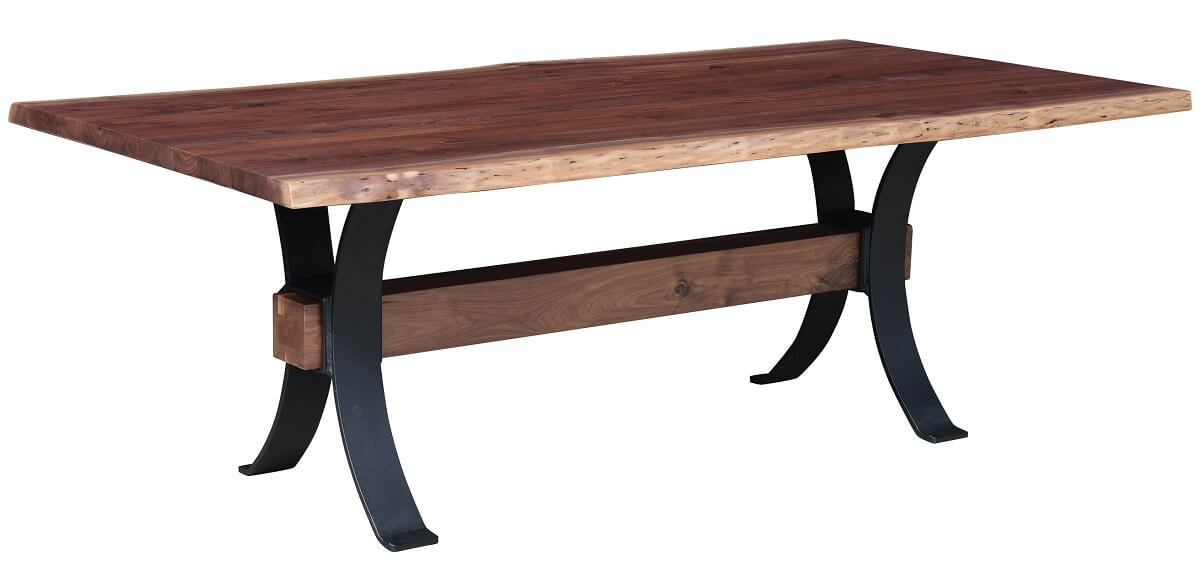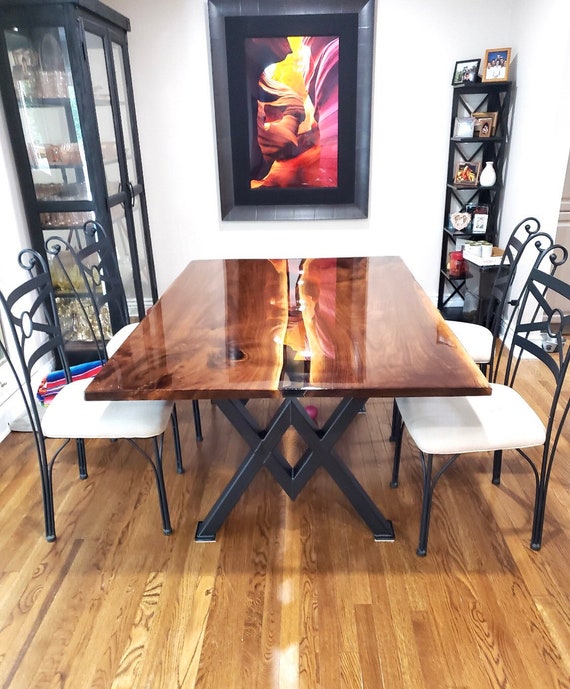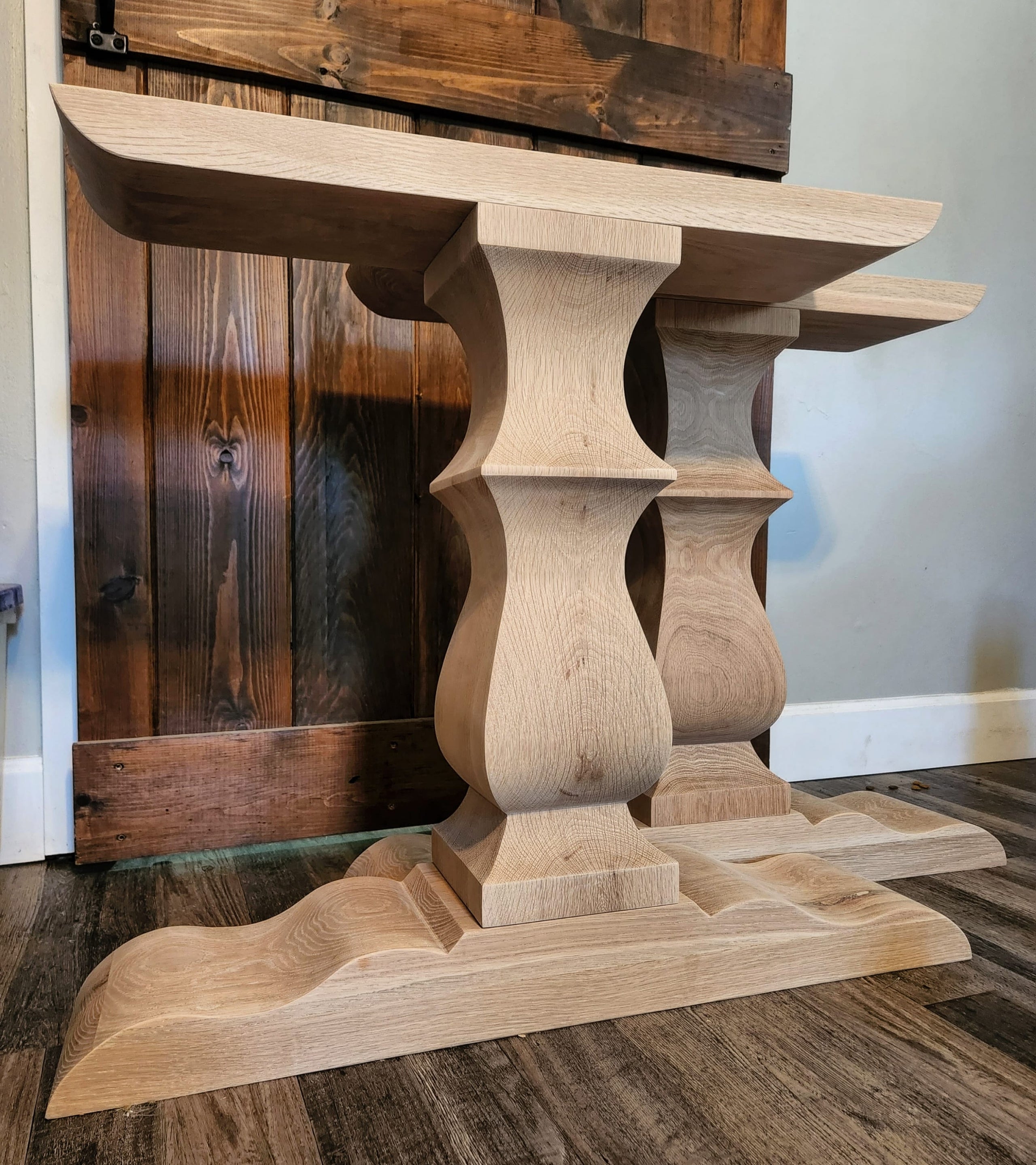Tips for Installing Dining Room Table Legs for a Modern Look
Exactly How to Pick the Perfect Eating Room Table Legs for Your Home Decoration
Picking the optimal dining-room table legs is a nuanced process that needs cautious consideration of numerous components, including your room restraints, visual preferences, and functional needs. The interplay between products, designs, and dimensions can considerably influence the ambiance of your eating location, making it important to approach this choice methodically. As you ponder the myriad options available, it ends up being clear that the appropriate choice extends beyond simple appearance; it can enhance your overall dining experience. What aspects should you focus on to ensure your option enhances your home's distinct character?
Assess Your Dining Room
Evaluating your dining area is essential for selecting the right table legs that match both aesthetics and capability. Begin by gauging the measurements of your eating area, including ceiling elevation, flooring area, and closeness to other furniture. This information will certainly aid figure out the suitable size and height of your table, which straight influences the choice of table legs.
Following, consider the style and format of your dining space. For example, an open-concept style might gain from table legs that supply visual lightness, such as slim steel or acrylic choices. Alternatively, a much more conventional setting could require tough wooden legs that give a feeling of permanence.
Examine the existing shade palette and products in your dining area. Balancing the table legs with these components creates a natural look that enhances the general decor.
Inevitably, a detailed assessment of your dining room will lead you in making an informed decision, ensuring that your table legs not only improve the aesthetic allure however additionally serve functional objectives.
Consider Your Style Preferences
When selecting dining room table legs, it is important to assess your personal design preferences, as they dramatically affect the total aesthetic of your eating area. Your selection of table legs can either enhance or contrast with existing décor, making it important to straighten them with your preferred interior decoration motif.
If your home leans in the direction of a contemporary aesthetic, consider sleek steel or minimalist wood legs that supply a tidy, minimalist look. For a much more traditional approach, elaborate wooden legs with intricate carvings can add a touch of style and class. Industrial styles take advantage of durable, resources such as recovered wood and metal combinations, mirroring a sturdy beauty.
Additionally, farmhouse and rustic styles frequently prefer strong, chunky legs that evoke a feeling of warmth and comfort. Conversely, if your design is diverse, you could select unconventional forms or a mix of products to create visual interest.

Evaluate Material Options
The choice of product for dining space table legs plays a crucial role in both toughness and aesthetic charm. Typical materials include timber, metal, and composite choices, each offering distinctive characteristics that can influence the general look and long life of your table.
Timber is a classic option, known for its warmth and convenience. Woods like oak and walnut give extraordinary toughness and can be ended up in different stains to match any type of decoration. Nonetheless, softwoods like pine are more susceptible to scrapes and damages, making them less ideal for high-traffic areas.
Metal legs, typically crafted from steel or light weight aluminum, exude modernity and industrial beauty. They are extremely resilient and immune to put on, making them suitable for families with children or constant celebrations (dining room table legs). Additionally, metal can be ended up in different shades, improving the personalization opportunities
Composite products, such as MDF or laminate, offer affordability and diverse layouts. While typically less long lasting than strong timber or steel, they can still give a stylish look and are usually easy to maintain.
Ultimately, the product you pick should straighten with your lifestyle, aesthetic preferences, and the degree of use your table will certainly experience.
Determine Height and Dimension
Picking the appropriate height and dimension for your dining-room table is essential for both functionality and convenience. The standard elevation for eating tables typically ranges from 28 to 30 inches, enabling enough legroom for the majority of individuals when seated. It is crucial to take into consideration the dimensions of your eating space and the kinds of chairs you plan to use.

Moreover, think about the percentages of your dining-room. A bigger table in a sizable area can develop a grand atmosphere, while a smaller table functions well in more intimate setups. Inevitably, the right elevation and dimension will certainly integrate with your total decoration and boost the eating look what i found experience for you and your visitors.
Explore Personalization Opportunities

In addition, the style of the legs can be customized to fit numerous designs, such as rustic, modern, or industrial. Conical legs can evoke a mid-century contemporary feel, while chunky, block-style legs may resonate with standard or farmhouse style.
Home owners can also discover color finishes, from all-natural timber discolorations to repaint, allowing them to match or contrast with the tabletop and surrounding style.
Additionally, leg elevation can be gotten used to fit details seating setups or personal preferences, boosting both comfort and functionality.
Lastly, special decorations, such as makings or decorative braces, can even more customize the table legs, making the dining experience not simply a meal but a declaration piece in the home. By considering these personalization alternatives, homeowners can produce a dining-room table that really shows their originality.
Final Thought
Picking the excellent eating space table legs requires careful consideration of different elements, consisting of over here the dimensions of the eating area, design choices, material longevity, and preferred elevation. Customization options further improve the ability to accomplish a natural visual that enhances the general decoration. By systematically examining these aspects, property owners can make certain that the chosen table legs not just satisfy functional requirements but likewise contribute positively to the dining experience and ambiance of the home.
Choosing the suitable eating area table legs is a nuanced process that calls for cautious consideration of various aspects, including your area restrictions, visual choices, and practical needs.Assessing your dining area is important for selecting the right table legs that enhance both appearances and capability.When determining dimension, gauge the area where the table will certainly be put to ensure it fits pleasantly, allowing for at the very least 36 inches of clearance around the table for easy movement. A larger table in a roomy area can develop a grand ambiance, while a smaller table works well in more intimate setups.Selecting the ideal eating area table legs requires cautious consideration of numerous variables, consisting of the dimensions of the eating room, style choices, material longevity, and preferred elevation.